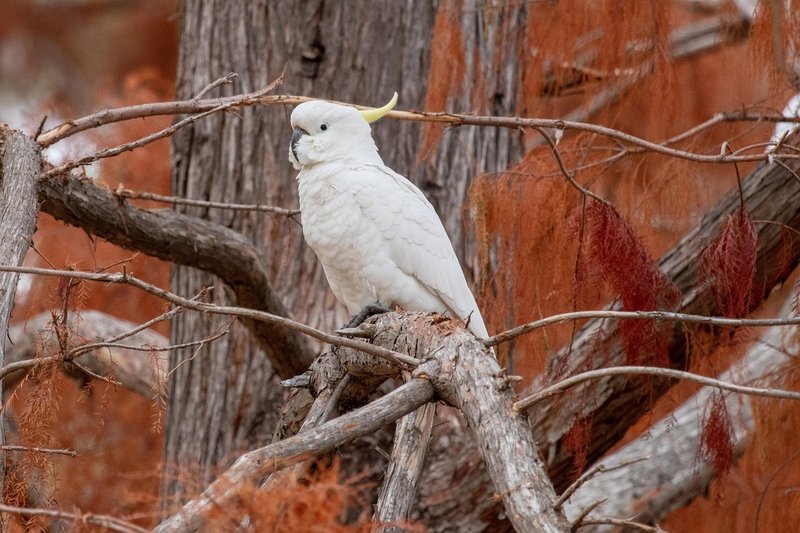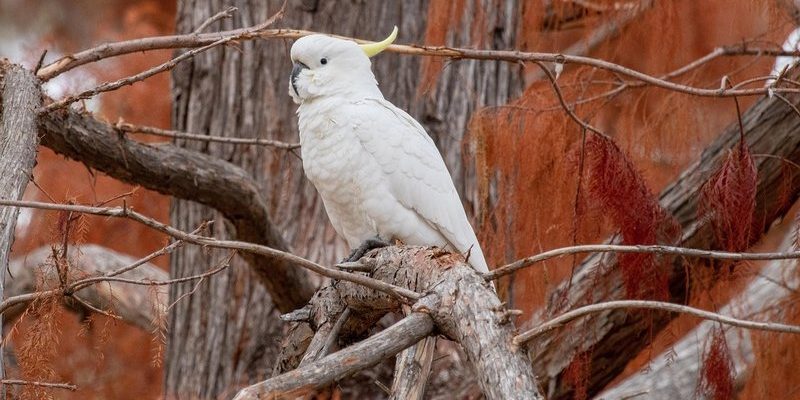
Imagine a cockatoo as a feathered engineer, constantly adjusting to the world around it. Just like how we might change our routines based on the seasons or our surroundings, these birds modify their behavior, diet, and social habits to find success wherever they go. So, let’s dive into the fascinating ways cockatoos adapt to their environment.
Physical Adaptations
Cockatoos are built for survival. Their physical features play a huge role in how they navigate their surroundings. For starters, those strong beaks aren’t just for show. They’re designed for cracking open tough seeds and nuts. With their powerful jaws, cockatoos can access high-energy foods that many other birds can’t. This gives them a significant advantage, especially in areas where food sources might be scarce.
Another interesting aspect is their feathers. Not only are they vibrant and beautiful, but they also serve practical purposes. The dense plumage helps keep these birds warm during cooler nights, while their colors can offer both camouflage and a way to communicate. For example, a cockatoo might display its bright crest to signal dominance or attract a mate. So, when you see those feathers ruffling in the wind, they’re doing a lot more than just looking pretty!
Behavioral Adaptations
Behavior is just as important as physical traits. Cockatoos are incredibly intelligent, and they use that smarts to adapt their behavior to different situations. They’re social creatures, often forming tight-knit flocks. This social structure helps them find food more efficiently and provides protection from predators.
Think of it like teamwork. When one bird spots a tasty treat, it can alert the others, allowing the whole group to feast together. This cooperative behavior is essential in environments where resources are limited. Moreover, in urban settings, cockatoos have learned to be quite crafty. They’ve adapted to scavenging from human food sources and can often be seen rummaging through trash cans or dining at outdoor cafes. They learn from each other, picking up new tricks to thrive alongside humans.
Dietary Flexibility
It’s not just what cockatoos eat, but how they eat that shows their adaptability. In the wild, their diet mainly consists of seeds, nuts, fruit, and even insects. However, they don’t shy away from adjusting their menu based on availability. In urban areas, they might munch on food scraps or seeds from bird feeders. This flexibility allows them to survive in environments where their usual food sources might be lacking.
Interestingly, some cockatoos even learn to associate people with food. If they notice that a specific location consistently provides snacks, they often return to that spot, almost like they’re keeping a mental map. This ability to adapt their eating habits not only keeps them nourished but also shows their smart approach to survival.
Habitat Adaptation
Cockatoos are found in various habitats, from lush forests to arid desert regions. Their adaptability to different environments is remarkable. In forested areas, they usually nest in tree hollows, taking advantage of the tall trees for protection and food access. But when the trees are fewer, as in urban settings, they’ll often seek out parks or gardens where they can still find food and shelter.
For instance, the sulfur-crested cockatoo often inhabits coastal areas but can also thrive in cities like Sydney. Here, they have learned to navigate traffic, avoid predators, and interact with humans. Their ability to switch habitats shows an impressive level of adaptability, allowing them to explore new territories while maintaining their unique traits.
Social Structures and Communication
Cockatoos are social birds, relying heavily on their flocks for survival. The dynamics within these groups can be fascinating! They communicate through various calls, body language, and even their crests. For example, an excited cockatoo might raise its crest to convey energy or alertness, signaling to others whether it’s safe or if there’s something fun going on.
Their social structures also allow them to learn from one another, sharing tips on finding food or avoiding dangers. You might notice that they seem to “talk” to each other frequently; this interaction is crucial in a world where threats can be around any corner, whether from predators or human activities.
Urban Adaptations
As cities expand, cockatoos have not only survived but thrived in urban environments. Their ability to adapt to life among skyscrapers and busy streets is quite remarkable. Cockatoos have learned to be less fearful of humans, often becoming quite comfortable in parks and gardens. This shift has led to increasing encounters between humans and these beautiful birds.
In urban areas, you might see cockatoos using their intelligence to bypass obstacles. They often figure out how to open bins or access food from outdoor cafes. This clever behavior showcases their ability to adapt to new challenges and leverage opportunities that arise in a changing environment.
Conservation and Future Challenges
While cockatoos are adaptable, they still face challenges due to habitat loss and climate change. Deforestation for agriculture and urban development threatens their natural habitats, making it harder for them to find food and nesting sites. This situation raises important questions about conservation efforts and how we can help these amazing birds continue to thrive.
Many organizations are working to protect their habitats and educate people on how to coexist with wildlife. By planting native trees and creating safe spaces for cockatoos, we can help them adapt even further. Every little bit counts toward ensuring these vibrant birds are around for generations to come.
In conclusion, cockatoos are true survivors, showcasing incredible adaptability in their environments—from their physical features to their social behaviors and dietary choices. By understanding how they thrive, we can appreciate their resilience and contribute to their conservation. So the next time you see a cockatoo flaunting its feathers, remember the remarkable journey that brought it there, adapting to overcome the challenges of its environment.

